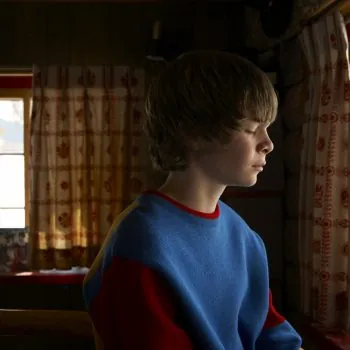Post-traumatic stress disorder (PTSD) is often associated with combat veterans and victims of sexual assault. It is a widespread condition with a spectrum of symptoms brought on by any form of trauma at any age. So, what about teens? Can teens have PTSD too?
Nearly 7 percent of adults experience PTSD at some point in their lives, and women experience PTSD more regularly each year (5.2 percent) than men (1.8 percent). However, among teens alone, about 5 percent experience PTSD any given year (8 percent among girls, 2.3 percent among boys). Children can experience PTSD as well, usually in response to abuse or the loss of a parent. PTSD symptoms appear a little different in children and teens than they do in adults.
Recognizing the signs of PTSD can help parents and friends get their loved ones the care they need and minimize the chances of long-term recurring mental health problems, such as high levels of stress and anxiety, recurring depressive thoughts, and even suicidal ideation.
What is PTSD?
Post-traumatic stress disorder is a type of stress disorder or anxiety disorder caused by trauma. Whereas other anxiety disorders may also figure in a traumatic or harrowing experience as part of its causes, PTSD can usually be directly attributed to a single event or series of events, such as a natural disaster, death of a loved one, or habitual family abuse. PTSD is triggered by a traumatic event but does have genetic causes. Some people are more likely to develop PTSD symptoms in response to trauma than others.
PTSD Symptoms in Teens and Children
In addition to being a mental health issue, PTSD has physical symptoms. The brain changes in response to trauma, sometimes being “locked” into a state of hypervigilance or awareness. Children, teens, and adults with PTSD have marked differences in the way their brain processes startling stimuli. As a result, people with PTSD are more prone to entering fight-or-flight, are more easily startled, and may be much more irritable and on-edge than others.
PTSD has several characteristic symptoms that can be categorized as either remembering/re-experiencing, avoidance, unwanted thoughts, or physical and emotional changes, such as heightened anxiety, difficulty controlling emotions, recurring depressive episodes, insomnia, jitters, nervousness, restlessness, and an uncontrollable startle reflex.
Can Teens Have PTSD? How Does it Differ from Adults?
Post-traumatic stress disorder is not a simple condition, and symptoms can vary depending on the nature of the trauma, the severity of the condition itself, and the age of the person. Children and teens will usually experience PTSD differently than adults.
In general, teens are more prone to anger and irritability after a traumatic experience. Teens with PTSD have a harder time with emotional regulation and will be more emotionally unstable as a result of their condition. They are more likely to turn towards violent actions against themselves or others following a traumatic experience and more likely to experience outbursts of anger, either against themselves or others. Teens are also likely to “retaliate” to abuse by engaging in self-harm, high-risk behavior, sexual behavior, or substance use.
Children and PTSD
Aside from greater emotionality and irritability, symptoms between teens and adults are mostly the same. Children, on the other hand, are more likely to incorporate elements of their trauma into play as part of their “flashbacks” or re-experiencing symptoms. A child under the age of six may re-experience their trauma through roleplaying or reenactments with toys. They are also more prone to nightmares and other frightening dreams that incorporate elements of their traumatic experience.
Time-Skewing and Omen Formation
Two other unique elements in pre-adolescent PTSD are time-skewing and omen formation. In other words, children are more likely to mess up the sequence of events in which their trauma took place, among other memory problems. They will have a harder time remembering exactly in what order things happened to them, perhaps due to the way their brain prioritizes the severity of the event over its chronological order.
Omen formation refers to the way children will attempt to understand what happened to them through pattern recognition. They may pick random signs that occurred prior to the trauma as predictive factors for a repeated event. In this way, they will try to stay alert for anything that might signal another traumatic experience, even if it had nothing to do with their abuse or trauma.
As with older teens and adults, children experience cognitive trouble and memory problems because of untreated trauma. They may do worse in school, and symptoms can continue for years after the event.
PTSD vs. Other Anxiety Disorders
PTSD can be classified as an anxiety disorder because its characteristic symptoms center around a nervous response to a traumatic event, and this can reinforce existing feelings of insecurity and anxiousness or create new ones.
Teens and adults with PTSD are also more prone to social and generalized anxiety (growing feelings of worry, despite no direct cause), panic attacks, and depressive symptoms, including overwhelming feelings of guilt and self-blame, and resulting episodes of self-harm or suicidal ideation.
However, most other anxiety disorders are not directly linked to a single event or traumatic cause. Anxiety disorders like social anxiety disorder or generalized anxiety usually develop independently of any event, with the most common age of onset being adolescence.
How is PTSD in Teens Treated?
Some medications can help teens with PTSD manage stress symptoms and depressive symptoms, such as antidepressants and anti-anxiety medication, but the bulk of a teen’s treatment relies on therapeutic methods, such as cognitive-behavioral therapy (CBT), dialectical behavior therapy (DBT), and eye movement desensitization and reprocessing (EMDR).
These therapies approach PTSD in different ways but ultimately circle back to helping teens work through their trauma, overcome, and deconstruct misattributed feelings of guilt or shame, and develop healthy coping skills to manage future stressors and lead a symptom-free life.
Specialized treatment may be needed in cases where PTSD is coupled with another diagnosis, such as substance use disorder or major depressive disorder. Co-occurring mental health conditions can complicate treatment and require an approach that addresses multiple issues concurrently through a lens of holistic mental care.
Finding Treatment for PTSD in Teens
It’s important to treat and address PTSD in teens to prevent other long-term mental health issues. If you suspect your teen of experiencing PTSD, contact us today.
Visions Treatment Centers is focused on treating teen mental health needs using specialty clinic modalities by licensed clinical psychologists. We also offer teen residential treatment programs and much more.








